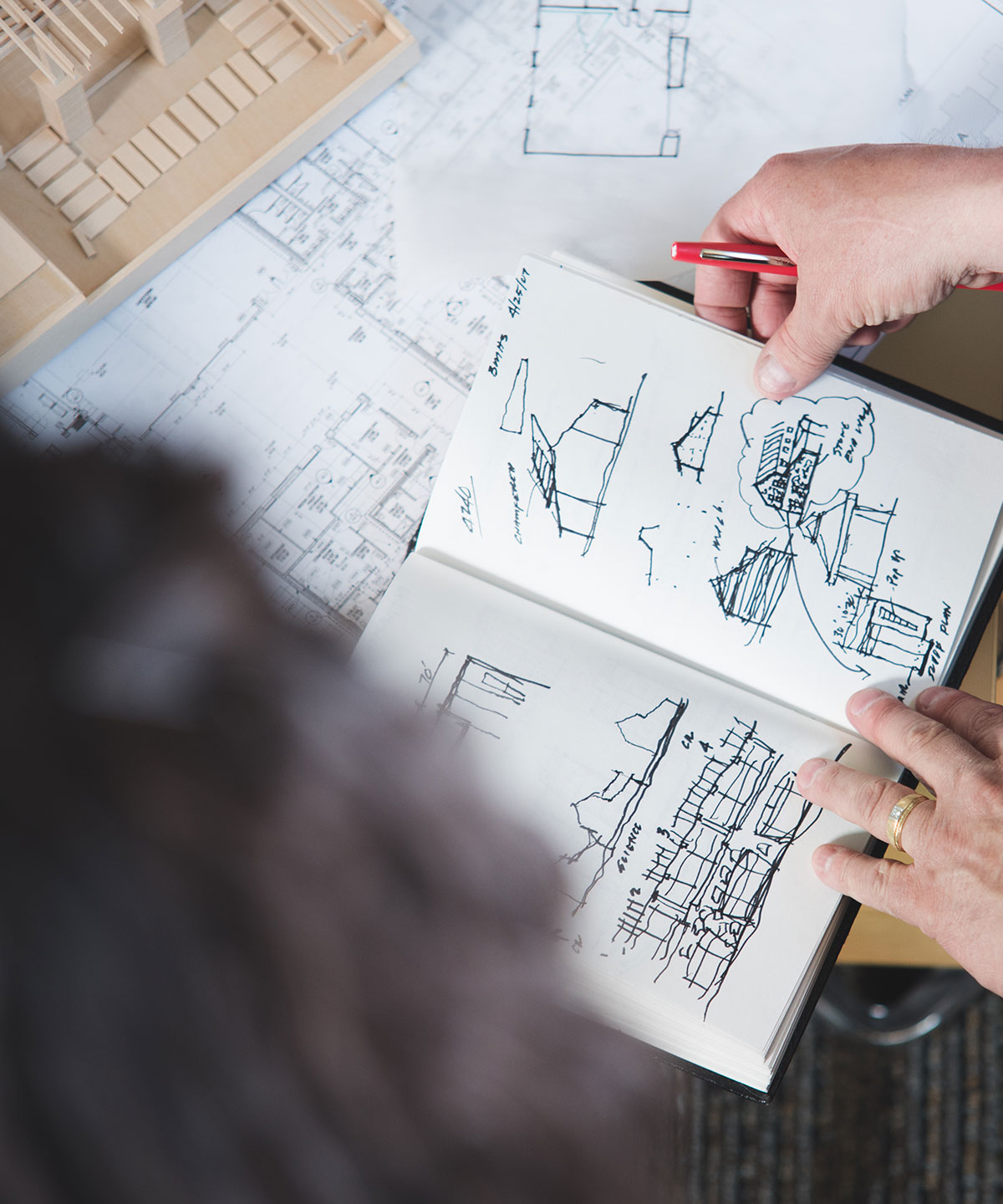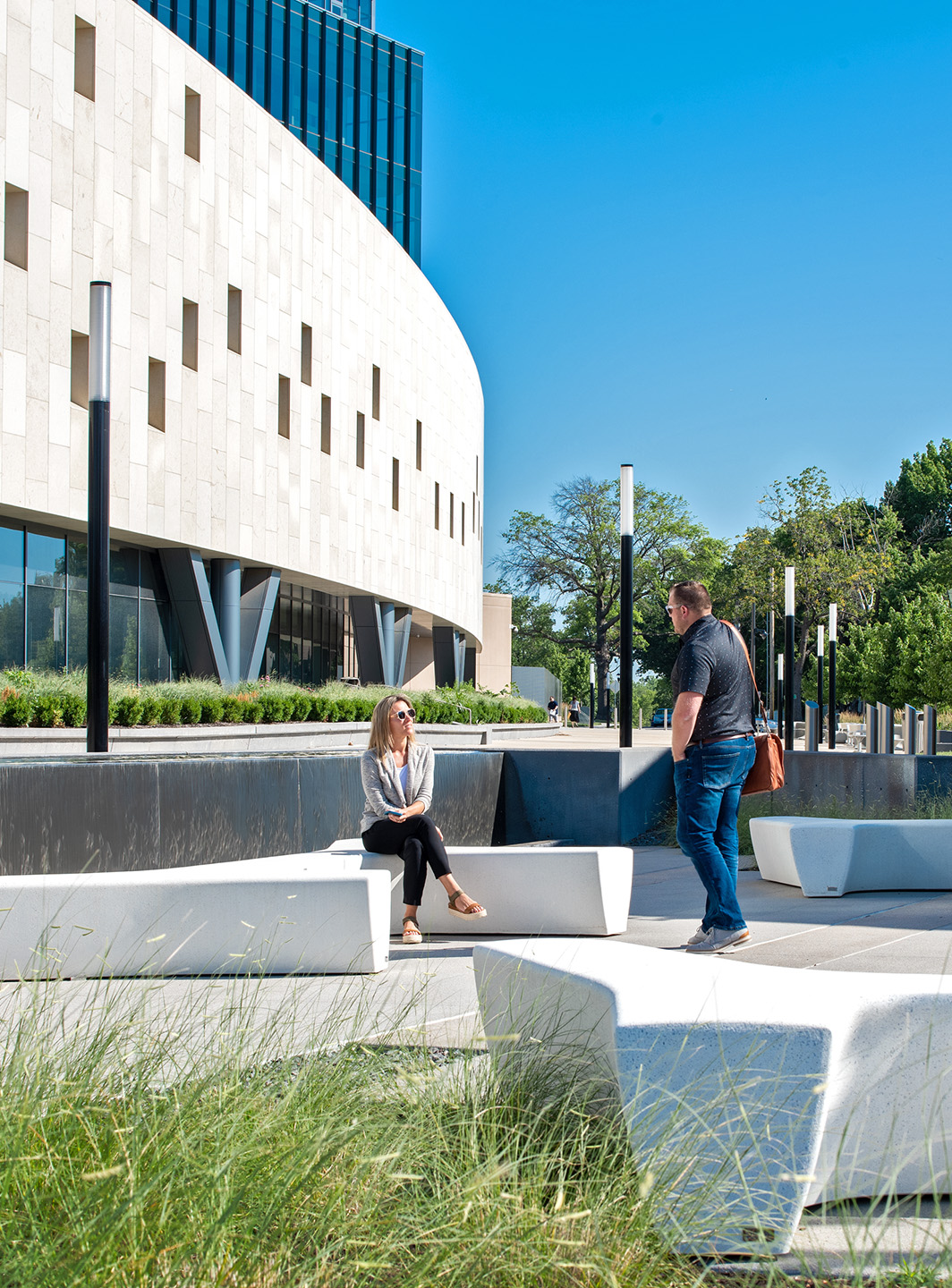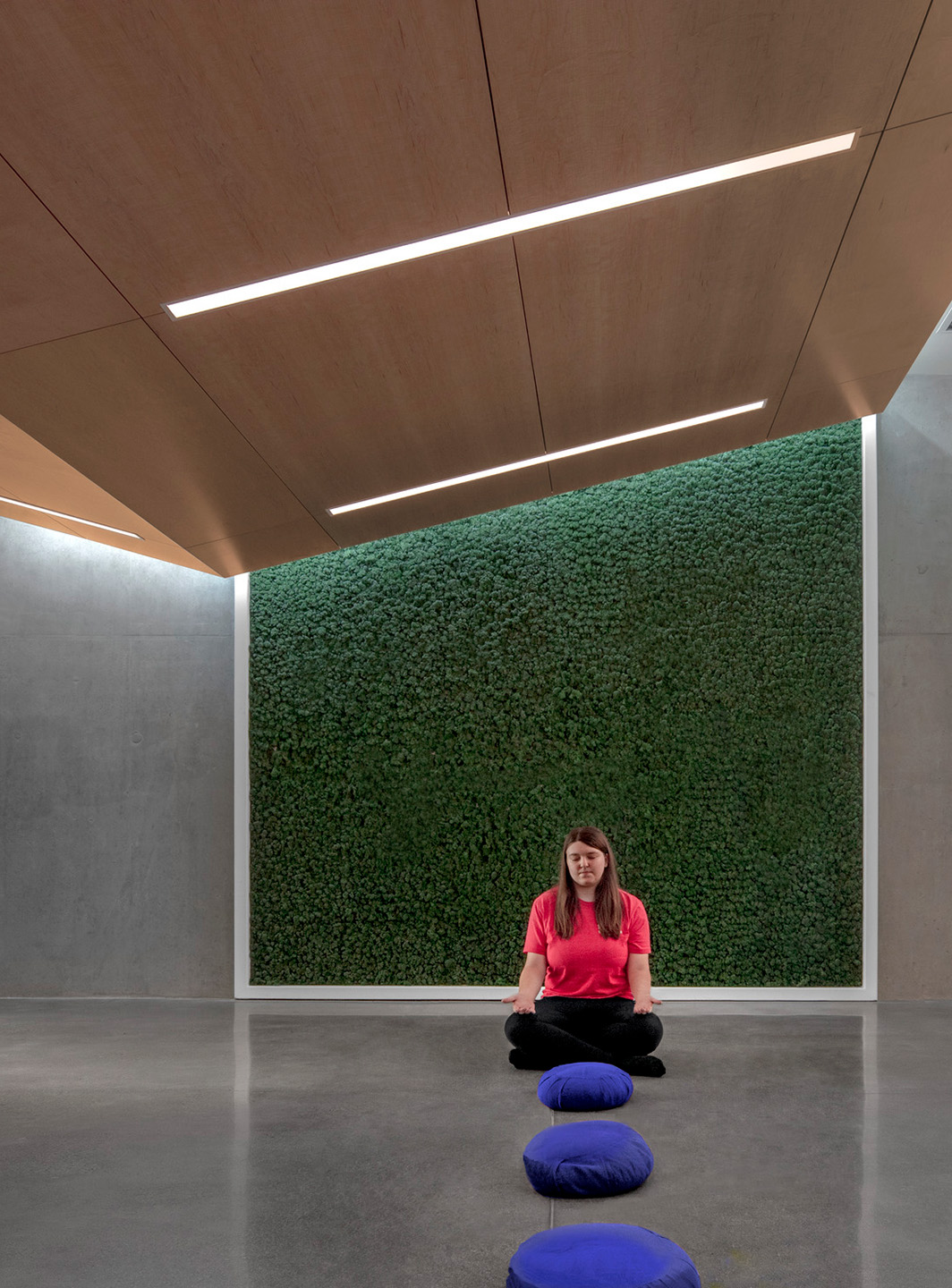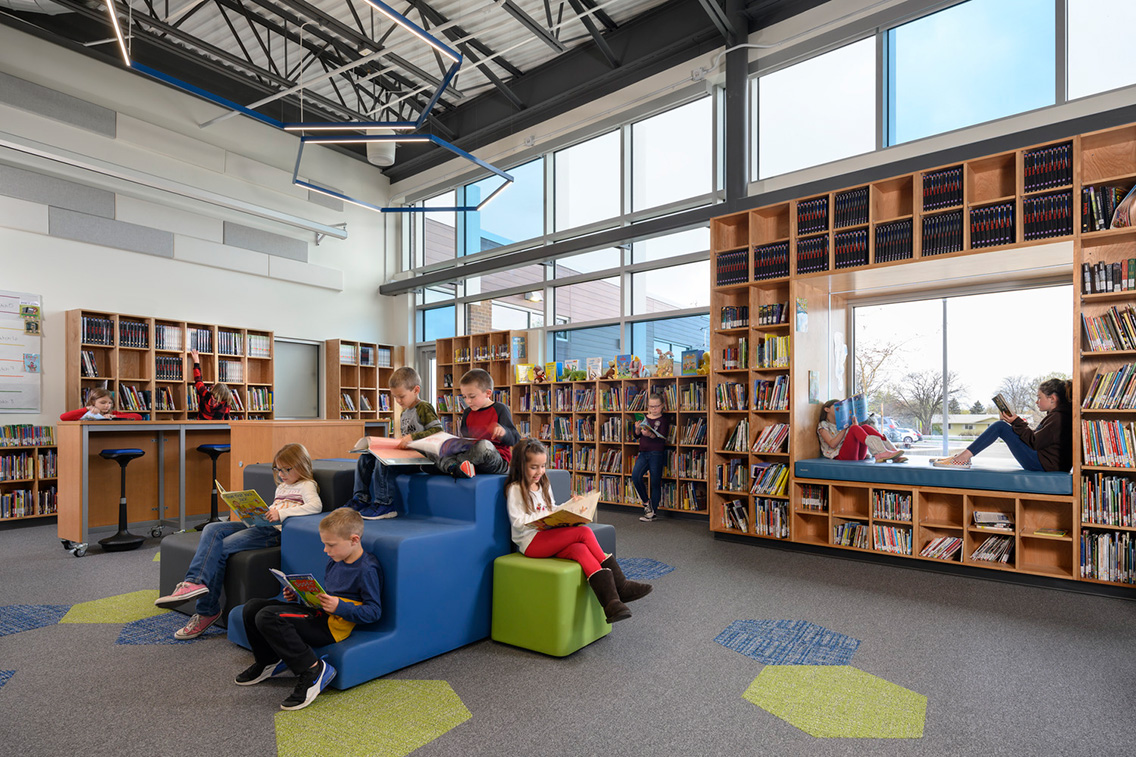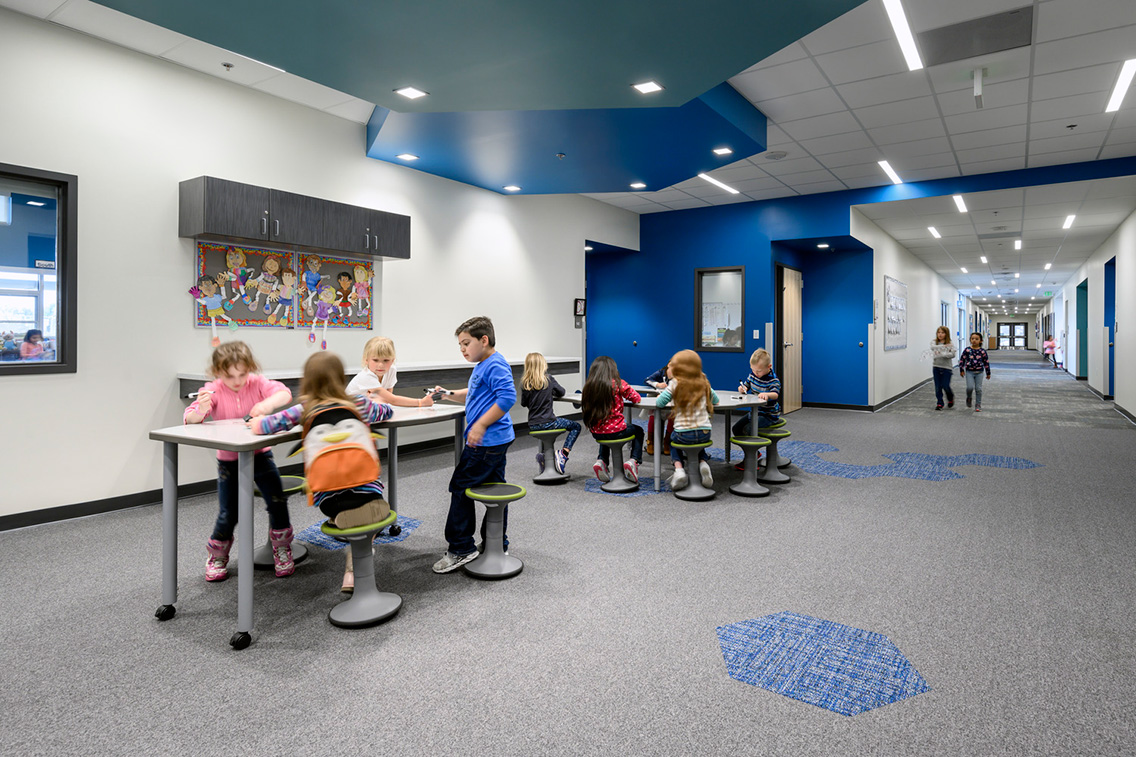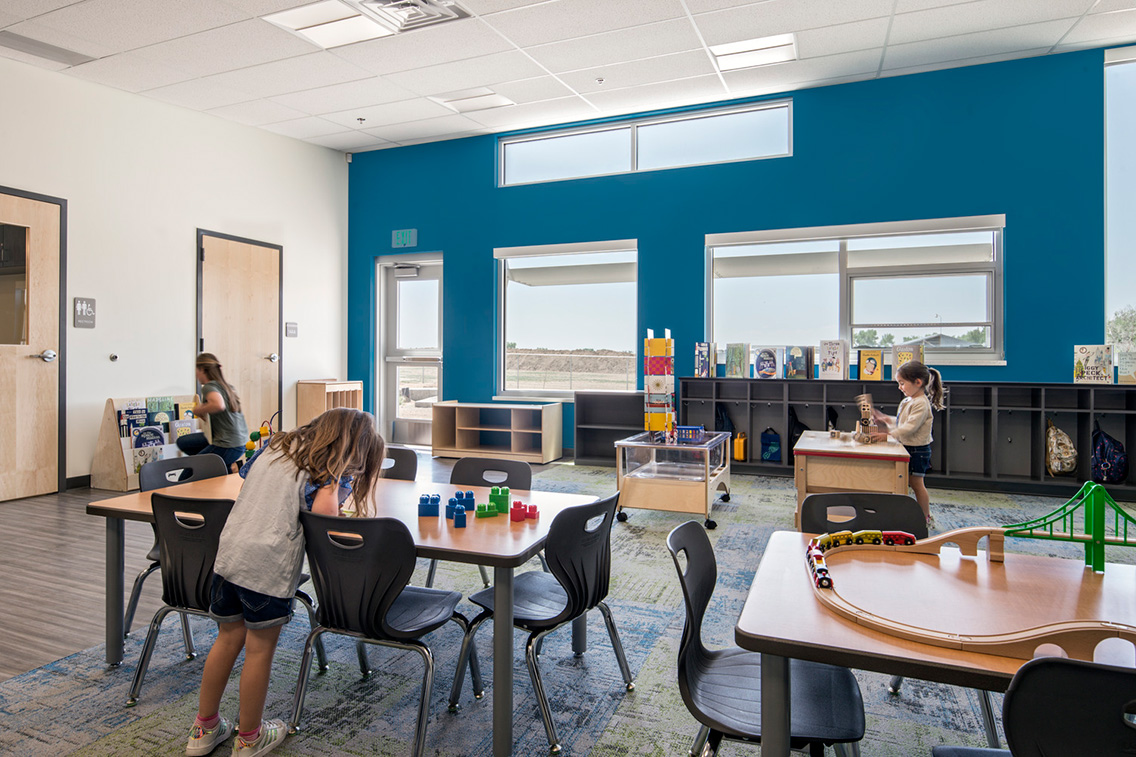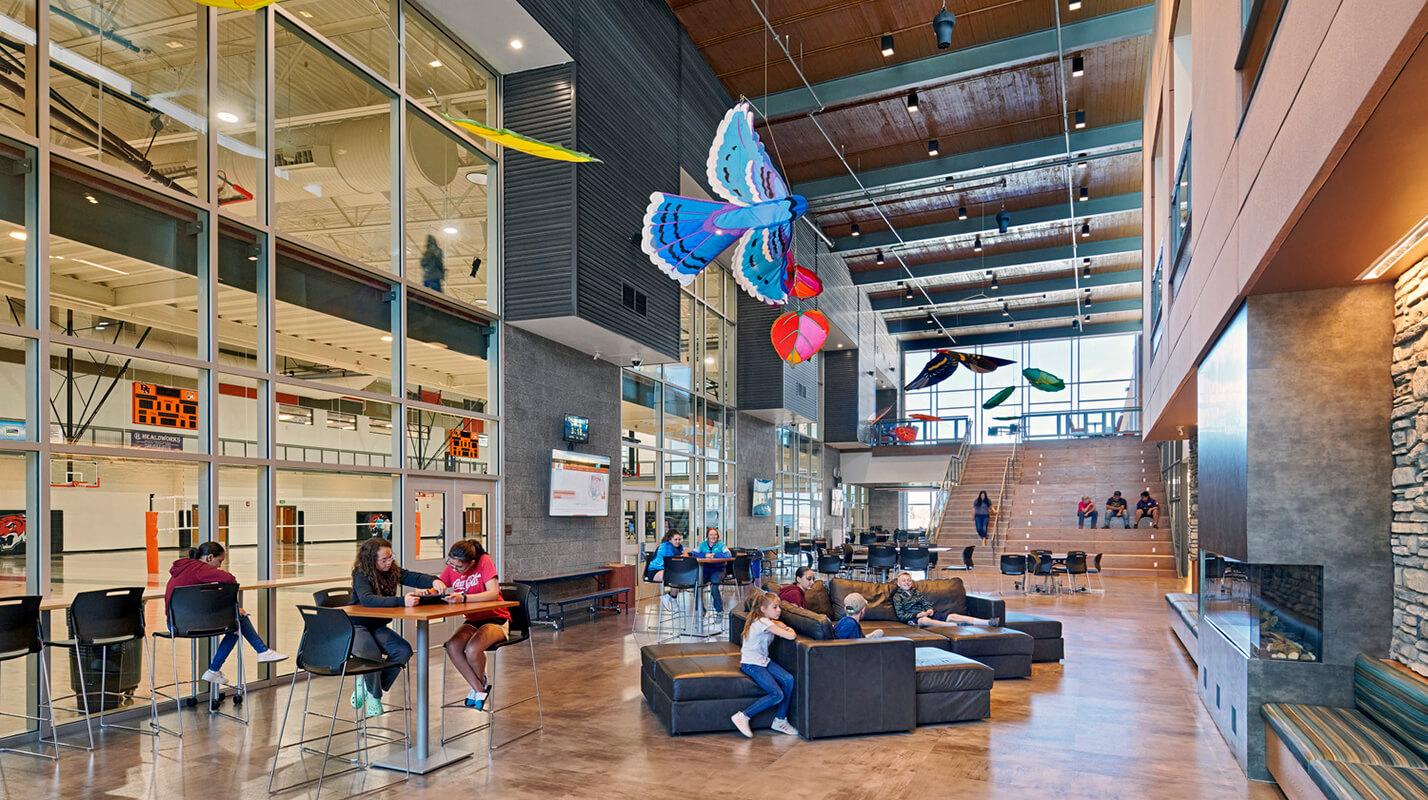Q&A with Hudson Elementary School Architect Scott Dangel
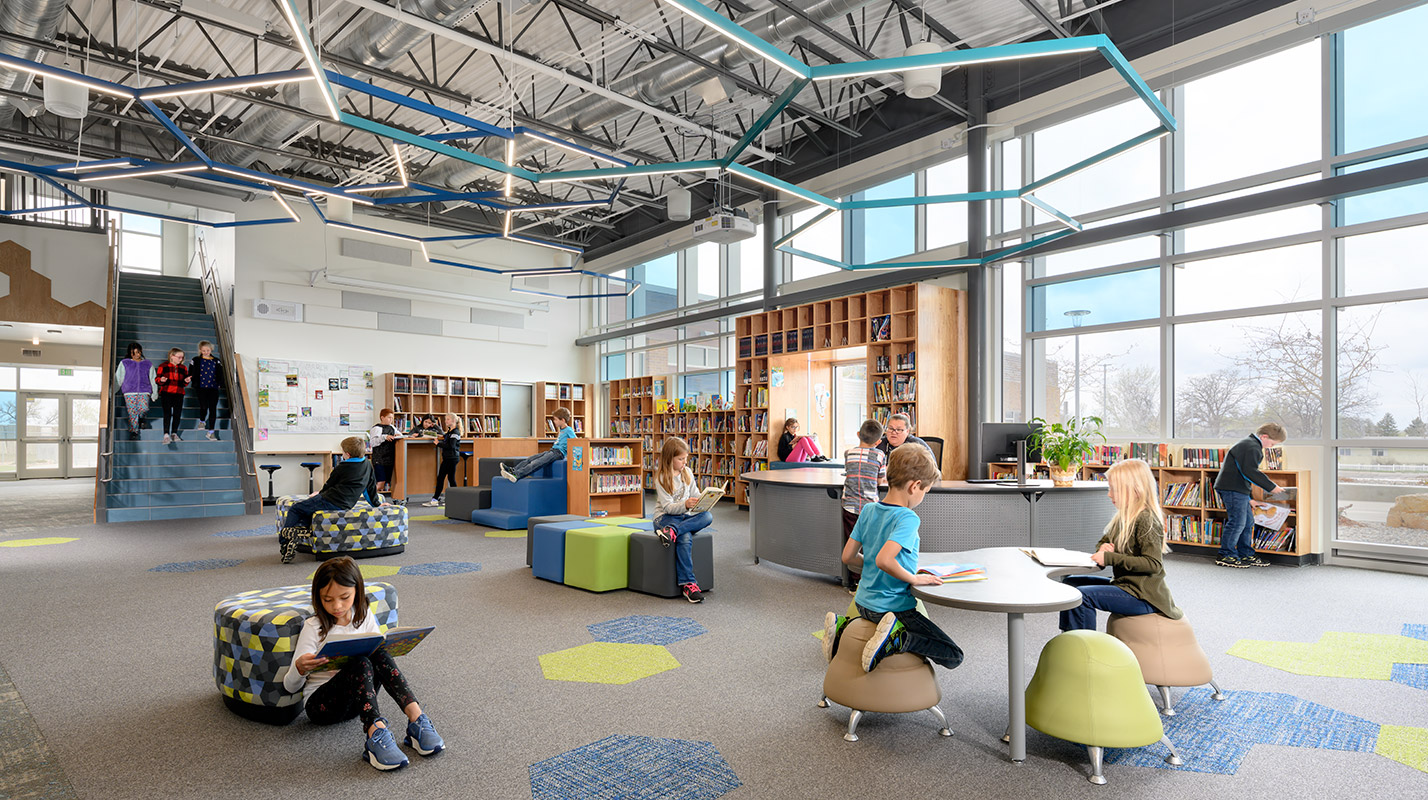
In this Q&A: inspiring elementary school design elements
We recently sat down with Scott Dangel to learn more about Weld RE-3J’s Hudson Elementary School, which opened to Weld Re-3J School District students in 2019. Apart from the existing cafeteria and gym added as part of a 2001 addition, the entire school was demolished, creating a new 54,431-square-foot, state-of-the-art building.
New construction included a centrally located media center, art classroom, STEM lab, a secure entry, and a redesigned administration area with better site visibility. The expanded facility also features 15 modernized classrooms, allowing the school to accommodate 372 more students.
In this Q&A, Scott discusses his favorite design features and some of the challenges the design team faced along the way.
What were the client’s overall goals for the school?
The district wanted to create a new elementary school to fit within the growing town of Hudson, Colorado. The innovative design for the school was the realization of a six-month visioning and planning process, which included input from parents, community members, teachers, support staff, students, and administrators.
Security and technology were two important requirements for the design, resulting in improved site visibility, efficient traffic flow configurations, and extended learning opportunities outside classroom walls.
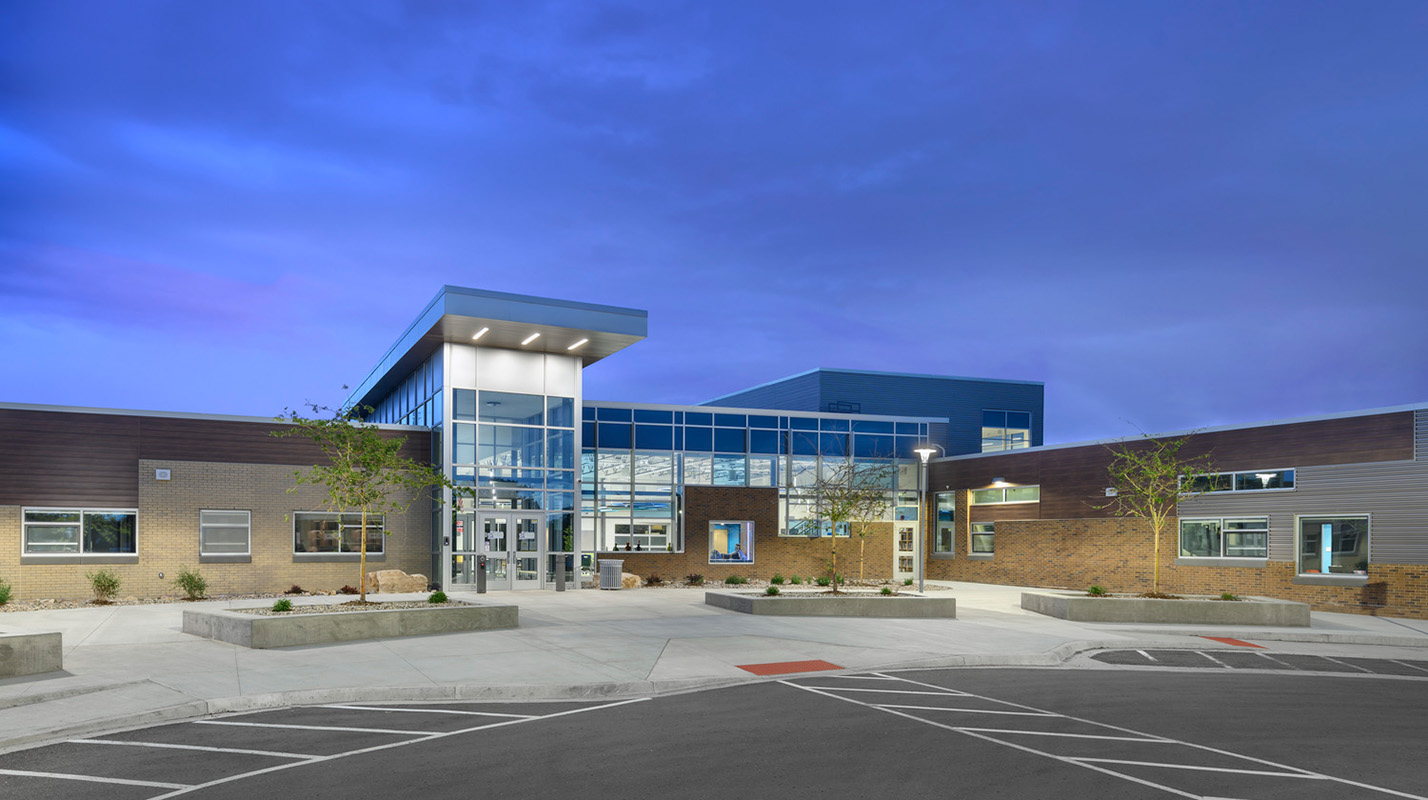
What is your favorite feature of the new school?
The heart of the school, located off the main entry of the building, is comprised of a centrally located media center, art room and STEM lab, which speak to each other visually and functionally. Since the heart of the new building incorporates science, math and art, the design team felt it was appropriate to allow the architecture to reflect these subjects. As students and staff walk through the building, there are architectural expressions of distinct geometric shapes, the Fibonacci Sequence, Morse code and moon phases.
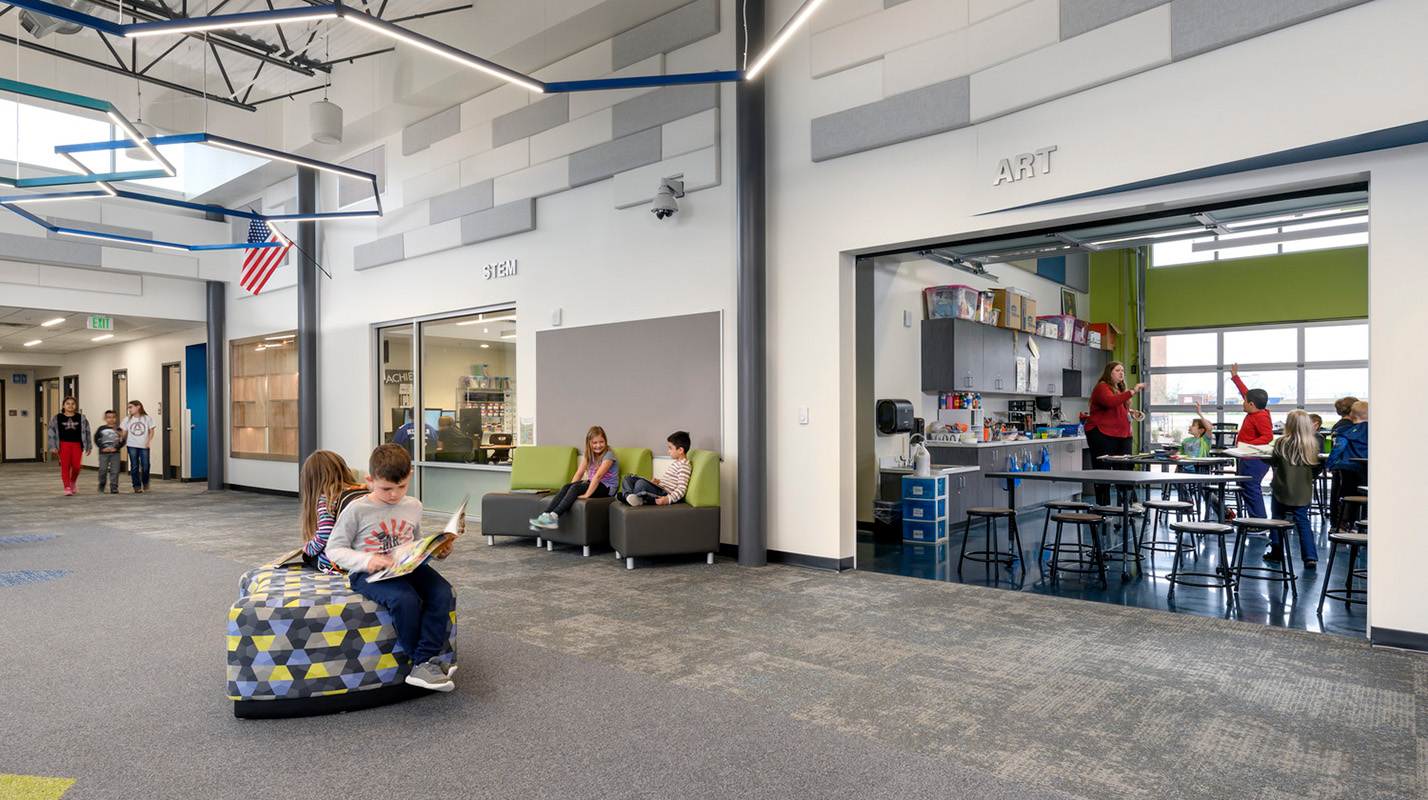
How do you create a child-scaled environment?
As a PK-5 facility, the team worked hard to provide a variety of locations and furniture solutions to help blend the different student scales into an environment where all students feel a sense of connection. One example is a custom bookshelf in the media center that ties into the exterior window system that changes height to accommodate different student requirements, and transitions into a portal that allows all students to use as a place to read and reflect.
At Hudson Elementary, the building is zoned so that children feel a sense of progression as they move through the grades. Third, fourth, and fifth graders complete their elementary school experience in the school’s two-story academic wing, which happens to be the only non-residential, two-story structure in Hudson.
How does the new school extend learning beyond the classroom?
The corridors, which double in size within the classroom wings, provide team centers for students and teachers to use as a secondary learning and teaching space outside the traditional classroom. These spaces are outfitted with the same technology (wall mounted projectors, marker boards, etc.) as in all the classrooms.
How does the design support safety and security?
The main entry to the building is a secure vestibule with a check-in window and the ability for the receptionist to control who enters the building. The administration suite was also strategically located so the parking area and any approaching person can be seen clearly long before they get to the entry vestibule.
Windows have been designed between classrooms and adjacent corridors to provide the required transparency for teachers and staff to monitor these areas. To alleviate the concern the district had with the negative side of visibility, all glazing into the classrooms have been fitted with bullet resistant film.
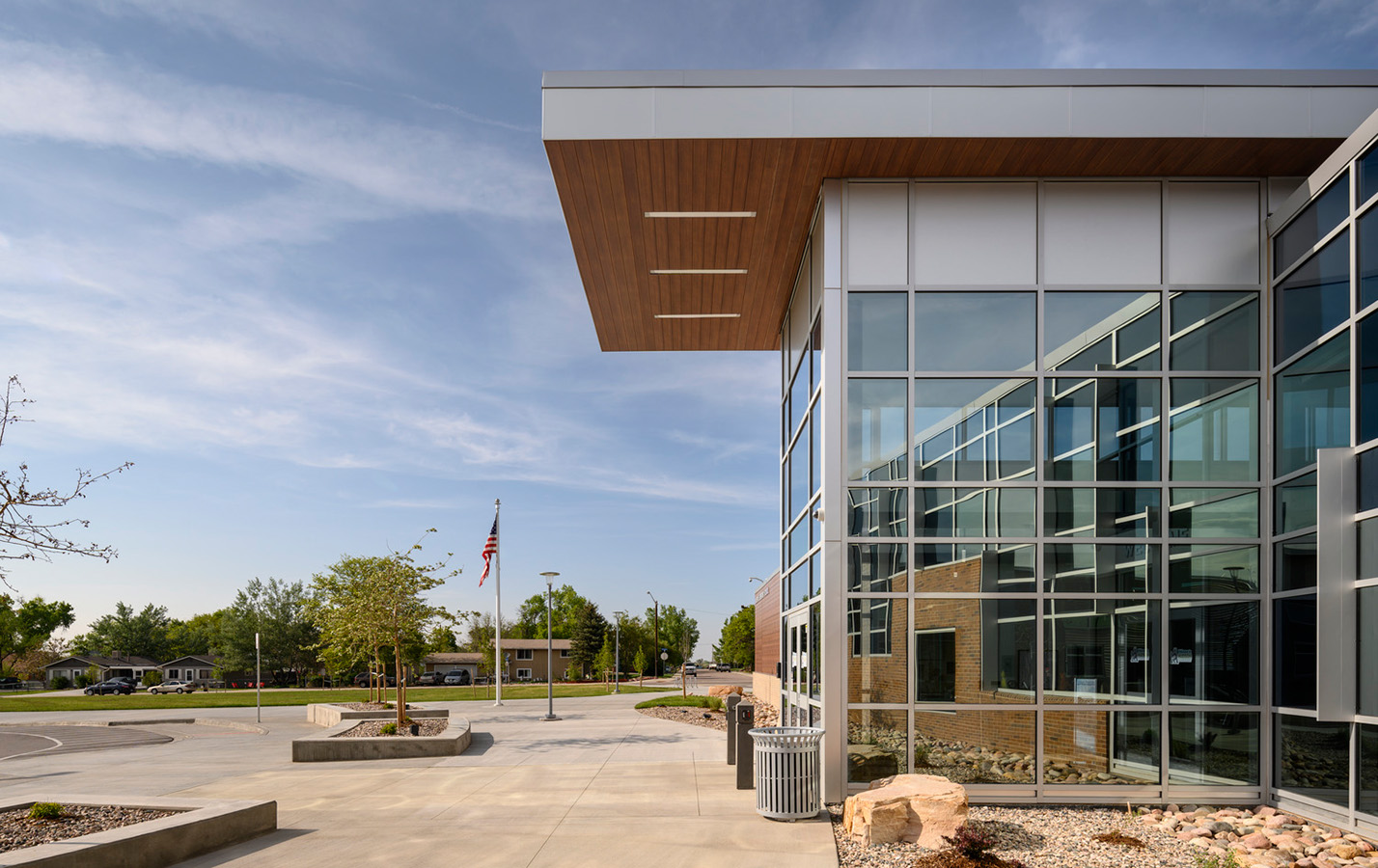
What challenes did you encounter during design and how did your team address those challenges?
Like most new schools in Colorado, the project was tied to the BEST (Building Excellent Schools Today) program, which provides a portion of the funding necessary to design and build a new school. Usually, the BEST grant is awarded first and then the district seeks additional project funding through local bond approval.
This project, however, experienced the reverse. There was a moment during construction documents when we were crossing our fingers that the project would be awarded the BEST grant so the current design would be feasible. This is never fun or even recommended for school projects, but we worked with the district to design multiple alternates so the project could proceed either way.
Another challenge the project faced was providing the school with a new aesthetic that the community could be proud of while having to build around an existing gym and cafeteria, which had to remain based on the budget. One of the most rewarding comments I’ve heard is that it’s hard to tell where the existing building ends and the new one begins.
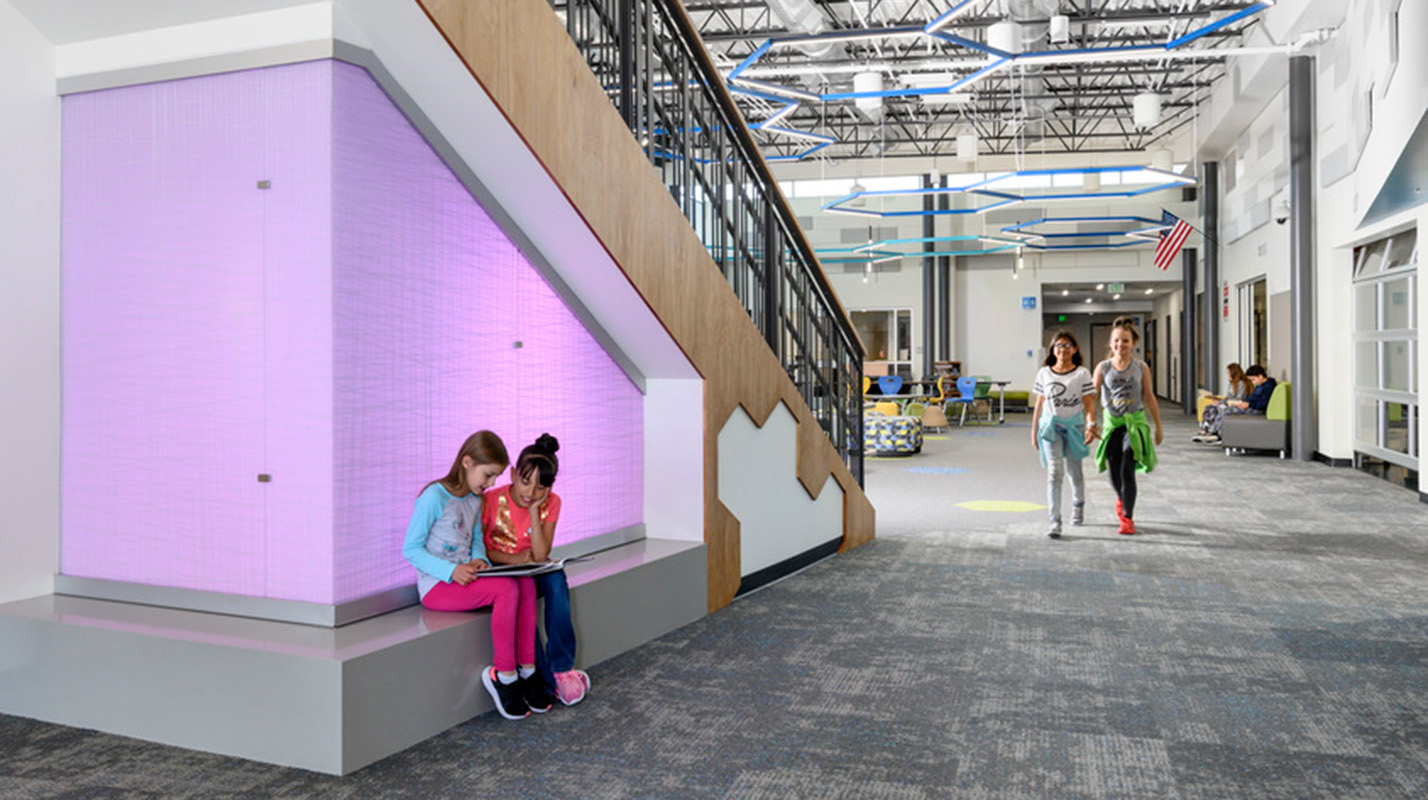
Authors
Stay on the leading edge
Stay up to date on emerging trends, research, hot topics, and more delivered conveniently to your inbox.
"*" indicates required fields
